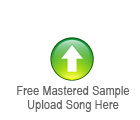About once a month I am asked to master an album that was recorded on a digital audio workstation, like most albums are these days, to analog tape. The idea is that recording the stereo mix to tape will saturate a mix with a sound that is consistent with a recording done entirely on 2″ analog tape. In some cases, the technique of tracking a completed stereo mix to analog tape and mastering back to digital is very successful and in other cases it is not worth the expense.
The first thing to consider is the size and quality of the mastering tape. I have experimented with with 1/4″, 1/2″ and 1″ half-track (or two track) tape machines at various speeds. In all test trials I used the same stereo mix and the quality was noticeably better with the 1″ tape. The quality difference between the 1/4″ and 1/2″ tape was nominal. In addition, the very best results also came from the highest speed, 30 inches per second in this case, and from the 1″ Quantegy mastering tape. With all test runs on tape less than 1″ thick I found it difficult to hear benefits of analog saturation and very difficult to justify the extra time and expense.
The second and equally important consideration is the style of music and instrumentation of the recording. In 15 years of post-production I have noted that successful analog tape mastering depends greatly on the simplicity of the recording. In other words, the more sparse the instrumentation – the greater the benefit. For example, a recording of a piano and cello, two instruments with very different tonal qualities will give each other a lot of “space” in the mix (meaning most of the dynamics and tonal colors of each instrument will be audible in the mix). That “space,” allows for the mix to fully benefit from the saturation of analog tape. In such cases I find it difficult to distinguish whether the recording was originally tracked on 2″ tape or whether it was transferred to tape in post-production.
Conversely, when analog tape transfer is used for a complex music mix with a full compliment of instruments such as an acoustic rock group or blues band, I find the benefits are subjective. When you consider the time and cost involved in transferring mixes to analog tape in real-time the it is a difficult choice to make. Furthermore, in a case where the music is very heavy such as a hard rock or distorted guitar-driven group, then the choice is clear – do not waste the money with analog tape!
In conclusion, if an analog sound is clearly the intent of the artist or producer and the instrumentation is not simplistic in nature as described in paragraph 3, then clearly a 2″ analog machine needs to be acquired for recording and tracking. On the other hand, if the recording and instrumentation leaves ample “space” in the mix, then seeking a mastering engineer with the knowledge and equipment to master to analog tape is a very cost-effective solution.


Comments are closed.